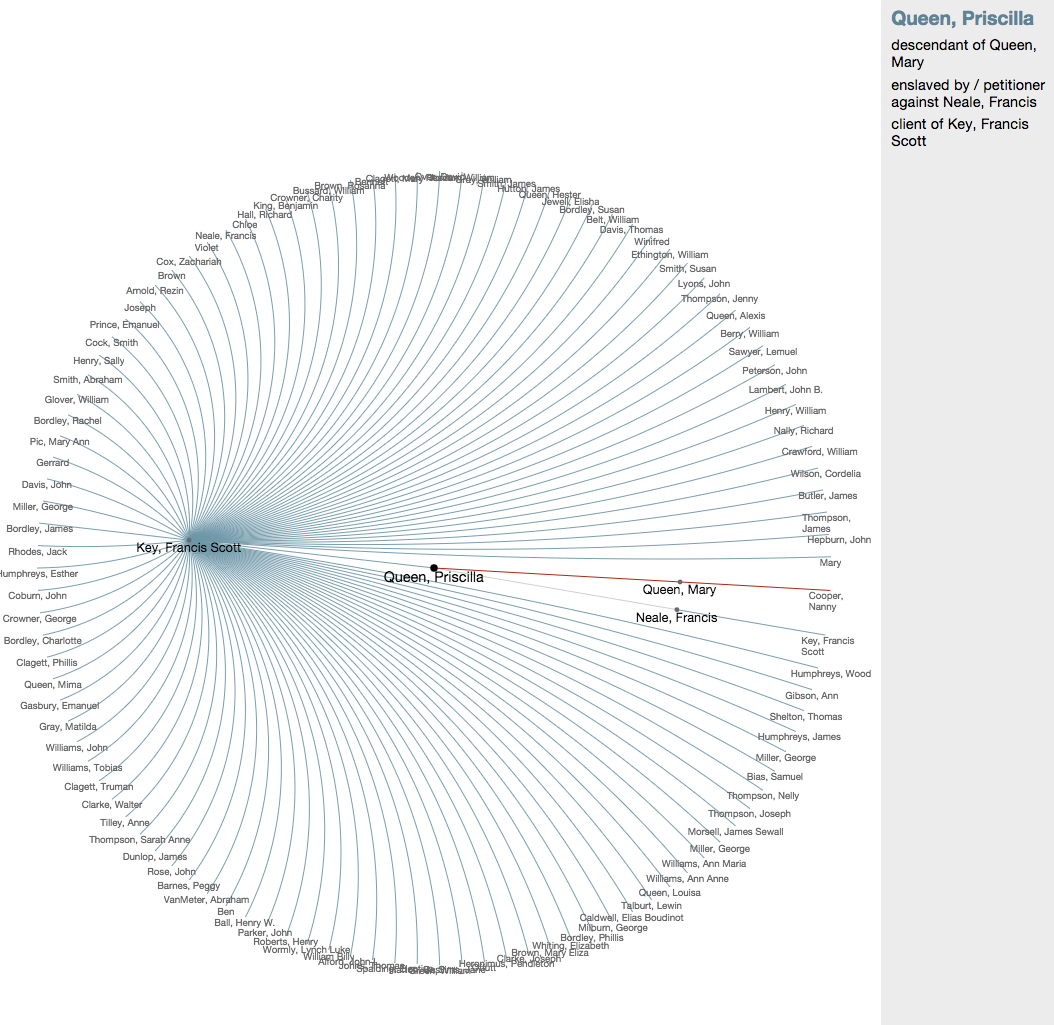
The University of Nebraska-Lincoln’s digital humanists are bringing the American experience of slavery into sharper focus with a newly revamped website that compiles and analyzes 19th Century court documents filed by slaves seeking their freedom.
Newly unveiled features on the “O Say Can You See: Early Washington, D.C., Law & Family” site will allow users to easily visualize and study the connections between slaves, slaveholders, their families and their legal and business ties.
“Each case is like a little story – each has a special twist or character that any reader would find extraordinarily enlightening and important,” said William G. Thomas, a UNL historian who leads the project.
The people identified in the records include prominent figures such as Francis Scott Key, author of “The Star Spangled Banner” and an attorney who represented many enslaved people seeking their freedom; as well as jurist William Cranch, nephew of John and Abigail Adams and chief judge of the circuit court from 1806 to 1855.
They also include “Joseph Thompson,” “Philis Butler,” “Priscilla Queen,” and other enslaved people who claimed freedom for themselves and their families. Although some petitioners are identified only by their first names, the project has revealed hundreds of previously unknown family names, relationships, and connections.
The redesigned site gives scholars and laypeople alike access to what will be the complete set of petitions for freedom suits filed in the District of Columbia Circuit Court between 1800 and 1862.
So far, thousands of documents from nearly 400 petitions for freedom suits have been transcribed and edited on the site, Thomas said.
A website redesign announced Sept. 11 gives each of nearly 1,300 people involved in those cases an individual page that lists all of that individual’s legal, occupational, family and social relationships as documented by the court records, including spouses and children, slave owners and fellow slaves; judges, lawyers, executors and fellow clients. Website users can read the records associated with an individual person, a case or a family.
“Every person has a relationship network that’s visualized as a graph,” Thomas said. “You can walk through that set of relationships and see who knows whom, who’s connected to whom and why. You can do that online in a way you can’t do in print.”
The project, which is funded with a $200,000 two-year collaborative research grant from the National Endowment for the Humanities, began in March 2014. Researchers at the University of Maryland are partnering with Thomas and UNL’s Center for Digital Research in the Humanities on the work.
By the time this phase is completed in March, case files for about 500 petitions for freedom will be featured on the site. Future phases will focus on other types of cases filed in the D.C. Circuit court, such as equity, civil and criminal cases.
Thomas said the website is useful to those studying and teaching the history of slavery, as well as people seeking to learn more about their family’s part in slavery.
“Anyone who’s working on the history of slavery would find this research incredibly valuable,” he said. “And it’s also aimed at the public. I think we need the moral imagination to confront the past and our family history, no matter what it is. We need to face what we find. These records help reveal connections long forgotten or overlooked.”








